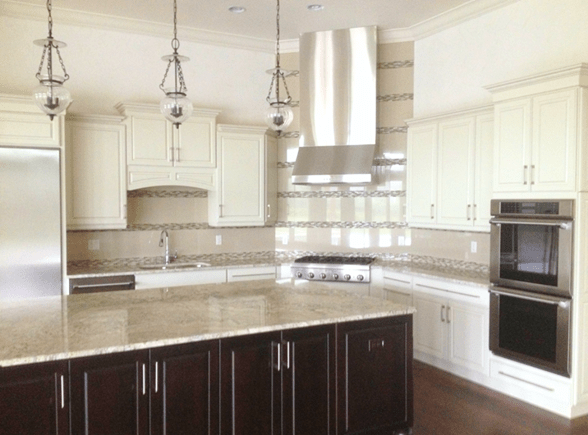
Transform Your Kitchen | Tips for Achieving a Perfect Transitional Design
Are you looking to elevate your kitchen’s aesthetic and functionality? Transitional interior design might be just what you need! Combining the best of traditional and contemporary styles, this design approach creates a timeless, cohesive look that can seamlessly blend into any home, especially those in Florida. Let’s dive into some tips to help you achieve a perfect transitional kitchen design.
1. Start with a Neutral Color Palette
A neutral color palette is the backbone of transitional design. Think whites, grays, beiges, and soft blues. These colors create a calm and inviting atmosphere, perfect for any Florida home. You can add pops of color through accessories, such as vibrant kitchen towels or a colorful fruit bowl, to keep things interesting.
2. Incorporate Natural Materials
Natural materials like wood, stone, and metal play a significant role in transitional kitchens. Consider incorporating a wooden island or stone countertops to bring in warmth and texture. Florida’s climate allows for a variety of natural materials that can withstand the humidity and heat, making them both practical and beautiful.
3. Mix and Match Textures
Transitional design thrives on the blend of different textures. Combine smooth surfaces like polished countertops with rougher elements like a reclaimed wood table or brick backsplash. This mix adds depth and interest to your kitchen, making it a true centerpiece of your home.
4. Opt for Shaker-Style Cabinets
Shaker-style cabinets are a staple in transitional kitchens. Their clean lines and minimalistic design make them versatile and timeless. Choose a light finish to keep the space feeling airy and open, perfect for the sunny Florida lifestyle.
5. Focus on Functional Layouts
Functionality is key in a transitional kitchen. Ensure that your layout is practical, with plenty of storage and easy access to appliances. An open-plan design can make your kitchen feel larger and more connected to the rest of your home, ideal for entertaining guests or family gatherings.
6. Add Subtle Elegance with Lighting
Lighting is a crucial element in any kitchen design. In a transitional kitchen, aim for a mix of modern and traditional fixtures. Pendant lights over the island and a classic chandelier above the dining area can create a balanced, elegant look. Make sure to take advantage of Florida’s abundant natural light by keeping window treatments minimal.
7. Incorporate Smart Technology
While transitional design leans on traditional elements, it doesn’t mean you have to forgo modern conveniences. Integrate smart technology such as touchless faucets, smart refrigerators, and efficient lighting systems. These additions can enhance the functionality of your kitchen without compromising its aesthetic.
8. Personalize with Accessories
Finally, add your personal touch with accessories. Think carefully curated art pieces, a beautiful rug, or unique bar stools. These elements can reflect your personality and make your kitchen truly your own. In Florida, coastal-inspired accessories like seashell decor or nautical-themed items can add a local flair to your transitional kitchen.
Today’s Takeaway
Creating a transitional kitchen design is about finding the perfect balance between old and new, combining comfort with style. By incorporating neutral colors, natural materials, and a mix of textures, you can transform your kitchen into a beautiful, functional space that fits seamlessly into your Florida home.
If you’re ready to transform your kitchen and need professional guidance, I’m here to help! Contact me, Marilou Stones, by visiting www.stonesdesignsllc.com and filling out our inquiry form. Let’s make your dream kitchen a reality!

